Understanding & Calculating Diminished Value (+ How to File)
January 10, 2024
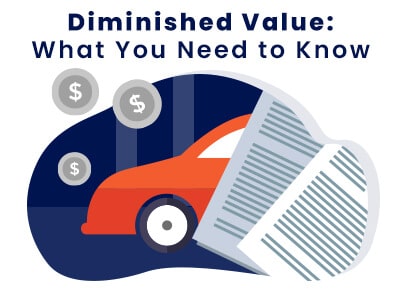

I am a serial entrepreneur and a consumer advocate. When I’m not helping car buyers, I love working on ventures that have a positive impact.
I run a cause marketing agency and serve on the board of Vayu Global Health where we are disrupting the medical industry and preventing the needless deaths of mothers and babies during childbirth.
Have you ever wondered about the impact of an accident on your car's value, even after full restoration? This is where the concept of 'diminished value' comes into play.
Diminished value is the reduction in a vehicle's market value occurring after an accident and subsequent repair.
Calculating this loss in value involves several factors, including your car's age, mileage, and the extent of damages.
While the process might seem daunting, understanding how to calculate diminished value is essential for recouping a fair amount for your car.
Table of Contents
Understanding Diminished Value Video
What is Diminished Value?
 Even if your car is restored 100% after an accident, it will not be worth the same market value. Diminished value is the difference between a car’s value before and after an accident. When you sell the vehicle, it will be worth less money based on the fact that it was in an accident.
Even if your car is restored 100% after an accident, it will not be worth the same market value. Diminished value is the difference between a car’s value before and after an accident. When you sell the vehicle, it will be worth less money based on the fact that it was in an accident.
You can file a diminished value claim to recoup some of what you spent to restore the vehicle.
What if you got into an accident in a leased car? Learn more about what to do next here.
Types of Diminished Value
There is more than one type of diminished value. Here are the three types to be aware of:
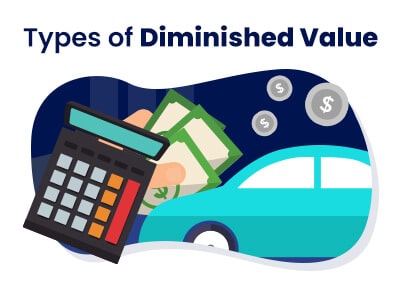
Immediate Diminished Value
The vehicle has one value immediately after it is in the accident before it is repaired. This is known as the immediate diminished value.
The immediate diminished value is rarely used to file a claim or sell a vehicle because the insurance company provides damage repairs right after the accident.
Inherent Diminished Value
The inherent diminished value is the most commonly used form of diminished value. The inherent diminished value is how much worth the vehicle has lost simply because it was in an accident.
This is used to determine the vehicle’s new market value after assuming quality repairs.
Repair-Related Diminished Value
If low-quality repairs impact the vehicle’s value, then it will face repair-related diminished value. Using aftermarket parts or a paint color that is not an exact match can cause this.
This value is based on the notion that the vehicle can no longer be restored to its original condition.
When Should I File a Diminished Value Claim?
Before filing a claim, you must determine if it is the best idea for you. Filing a claim does not guarantee a payout, so you want to make sure it is worth your time. Here are the top considerations:
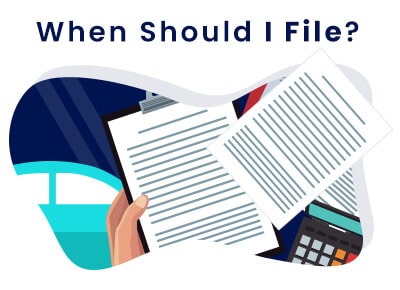 The vehicle’s value before the accident. It’s not often worth the hassle to file a claim for older cars with a lot of mileage or damage. However, for newer, higher-value vehicles, it makes sense.
The vehicle’s value before the accident. It’s not often worth the hassle to file a claim for older cars with a lot of mileage or damage. However, for newer, higher-value vehicles, it makes sense.- How long ago was the accident? You want to file as soon as possible, within a few days of the accident.
- Who caused the accident? Were you at fault for the accident? If so, your insurance company will probably not pay the claim.
- Was the other driver uninsured? File the claim if you have uninsured motorist coverage on your policy.
- Which state do you live in? Look into your state laws about diminished value claims first.
What States Allow Diminished Value Claims?
Not all states allow diminished value claims. Since Georgia permitted these claims due to a class-action lawsuit in 2001, more states have started to.
Now, every state aside from Michigan allows for some amount of diminished value claim. To find out if your state covers these claims, contact the insurance commissioner for your state.
How to Calculate Diminished Value
Use the 17c Diminished Value Formula to calculate the diminished value of a vehicle. The formula came from the State Farm class action lawsuit that convinced Georgia to cover these claims. It is found in paragraph 17, section c, and is named accordingly.
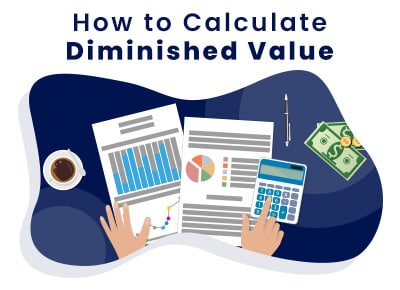
Here are the steps to using the formula:
1. Find Your Car’s Value
First, you need to determine the value of your vehicle. You can use several methods to find the value of your car. Use trusted sites like Kelley Blue Book and NADA to input the details of your vehicle and get an estimate.
For this, you’ll need to know the make, model, year, mileage, and damage of your car. You can also opt for a professional appraisal.
2. Incorporate the 10% Cap
Most insurance companies have a 10% cap on how much they will pay on a diminished value claim. The 10% cap is known as the “base loss of value, " which applies to the vehicle value estimate.
3. Use the Damage Multiplier
You’ll multiply the 10% value cap of the car by the damage to determine the adjusted value. If there is no damage, you will use the zero multipliers. On the other hand, the 1.00 multiplier signifies a vehicle with severe structural damage.
- 0.00 = No structural damage
- .25 = Minor structural and panel damage.
- .50 = Moderate structural and panel damage.
- .75 = Major structural and panel damage.
- 1.00 = Severe structural and panel damage.
4. Mileage Multiplier
Even though KBB and NADA factor in mileage to determine value, insurance companies use their own mileage multiplier adjustment. The mileage multiplier is as follows:
- 1.00 = 0 to 19,999 miles
- .80 = 20,000 to 29,999 miles
- .60 = 40,000 to 59,999 miles
- .40 = 60,000 to 79,999 miles
- .20 = 80,000 to 99,999 miles
- 0.00 = over 100,000 miles
To determine the diminished value, you multiply the vehicle value by the 10% cap. Then, you apply the damage and mileage multipliers.
Let’s look at an example:
Imagine you have a car with a market value of $10,000 with mild structural damage and 42,000 miles.
$10,000 x.10 = $1,000. This is the most you could receive from a car insurance company.
$1,000 x .25 = $250 which would be the value adjusted for minor damages.
$250 x .60 = $150 which is the value adjusted for the 42,000 miles.
How to File a Diminished Value Claim
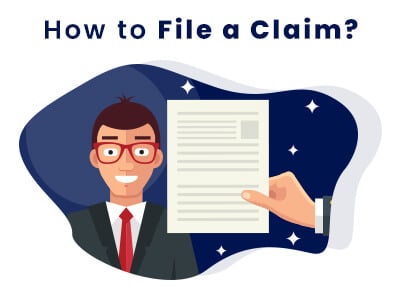 When filing a diminished value claim, you must provide the diminished value. This can be more difficult and time-consuming than other claims.
When filing a diminished value claim, you must provide the diminished value. This can be more difficult and time-consuming than other claims.
Depending on the rules of your insurer, a car accident that is your fault will not be eligible for the value claim. You will likely need to contact the insurance provider of the other driver if the accident was their fault.
Here are the basic steps for filing the claim:
- Insurance. Check the insurance rules for filing the claim. If you are dealing with an uninsured driver, you may have to use uninsured motorist coverage from your insurance.
- Value. Document the car’s value from an approved source.
- Documents. Gather other essential documents like photos from the accident scene and documentation of repairs. Carefully read the claim requirements to determine what you need.
- State Laws. Research state laws as well to best understand your rights and responsibilities for the claim.
Best Car Deals by Category
Frequently Asked Questions
What is a diminished value claim?
After a vehicle has been in an accident, it loses value, even when completely restored. A diminished value claim is something you file with your insurance company to recoup the lost value.
Is a diminished value claim worth it?
The process is difficult and not a guarantee. However, if your car is worth a lot less after an accident that was not your fault, then filing the diminished value claim can help you recoup some of the value loss.
How long does it take to settle a diminished value claim?
These claims tend to take longer than many other auto claims. They are complicated and can take several weeks or even months to finalize. If you have to hire a lawyer, it will take even longer.
Will my insurance company pay for diminished value?
Insurance companies will only pay the claim if the accident was not your fault and you effectively prove the diminished value. State laws vary on the claims.
Why does a car have diminished value after an accident?
Cars immediately lose value after an accident for being in an accident. Accidents are a concern to future buyers, so they lower the value. Additionally, low-quality repairs following an accident can reduce the value.
How much should I get for diminished value?
To calculate the diminished value, you must use the 17c Diminished Value Formula. You’ll need to know the market value of your vehicle, the mileage, and the extent of the damage. Find the market value of your vehicle, then take 10% of the book value. Multiply that 10% by the damage and mileage multipliers to estimate your diminished value claim.
What if my insurance won’t pay diminished value after an accident?
Keep in mind that your insurance company won’t pay for the diminished value if you are at fault for the accident. Next, make sure you have followed all of the requirements and submitted the correct documents. If the insurance company still will not pay, consider working with a legal professional.
Posted in Car Buying Tips |




